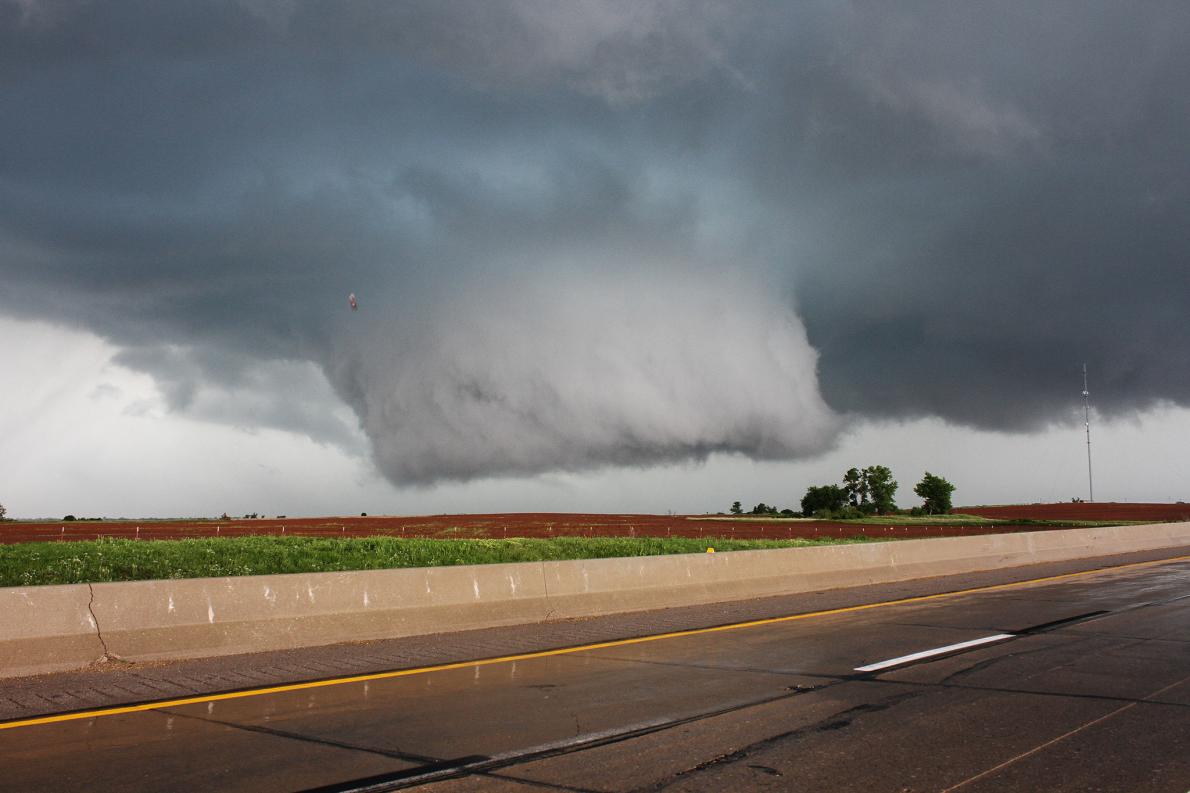How Tornadoes Form and Why They’re so Unpredictable

More than 70 tornadoes were reported over the weekend in the Midwest and Great Plains of the United States, killing at least three people, with at least ten more still missing and significant damage in Arkansas and Texas.
More tornadoes are expected in the coming days. The fierce storms can happen at any time of year but are most common in May and June in North America, when atmospheric conditions tend to be most right for their formation. Tornadoes remain deadly and relatively unpredictable, despite recent advancements in weather science.
Here’s what scientists do know:
A tornado, or twister, is a violently rotating column of air that extends between the Earth’s surface and a cloud, usually a cumulonimbus cloud. Most tornadoes last for less than ten minutes, says Harold Brooks, a research meteorologist with the National Oceanic and Atmospheric Administration’s(NOAA) National Severe Storms Laboratory (NSSL) in Norman, Oklahoma.
Large tornadoes usually last longer—around 30 minutes, Brooks says. The most powerful twisters have wind speeds of more than 300 miles (483 kilometers) per hour, which can rip buildings off their foundations. They can be more than two miles (3.2 kilometers) wide, and can spin across the ground for dozens of miles.
The more common tornadoes have wind speeds of less than 110 miles (177 kilometers) per hour, are about 250 feet (76 meters) across, and travel only a few miles before they dissipate.
Tornadoes kill an average of 60 people a year in the U.S., mostly from flying or falling debris,reports NOAA. (See “Interactive: Forces of Nature.”) Half of those deaths are caused by the strongest one percent of the most violent storms, says Brooks.
How Tornadoes Form
The most intense tornadoes emerge from what are called supercell thunderstorms. For such a storm to form, you first “need the ingredients for a regular thunderstorm,” says Brooks.
Those ingredients include warm moisture near the surface and relatively cold, dry air above. “The warm air will be buoyant, and like a hot-air balloon it will rise,” says Brooks. A supercell requires more: winds that increase in strength and change direction with height. “Then the updraft tends to rotate, and that makes a supercell,” explains Brooks.
The supercell churns high in the air and, in about 30 percent of cases, it leads to the formation of a tornado below it. This happens when air descending from the supercell causes rotation near the ground.
Even then, “we still don’t know why some thunderstorms create tornadoes while others don’t,” tornado-chaser Tim Samaras said in early 2013. Samaras was a scientist and National Geographic explorer who was killed by a twister on May 31, 2013, in El Reno, Oklahoma. (Read about Samaras’s life and death.) Brooks says scientists believe that strong changes in winds in the first kilometer of the atmosphere and high relative humidity are important for the formation of tornadoes. There also needs to be a downdraft in just the right part of the storm.
Indeed, tornado formation requires what Brooks calls a “Goldilocks” situation, in which air must be cold but not too cold. It should be a few degrees more frigid than surrounding air.
But there’s more scientific mystery surrounding how tornados end. “We don’t understand how tornadoes die,” Brooks says. “Eventually the air gets too cold and it chokes off the inflow of new air into the storm, but we don’t know the details.”
Read more: http://news.nationalgeographic.com/2015/05/150511-tornadoes-storms-midwest-weather-science/
Collected: Brian Clark Howard, National Geographic

